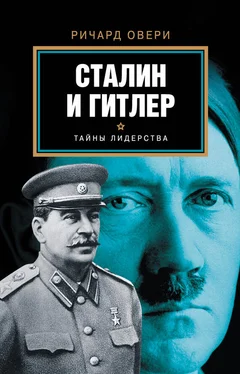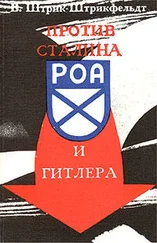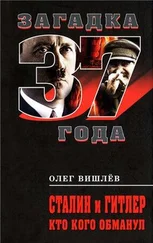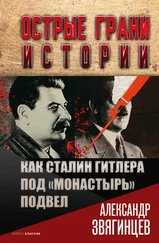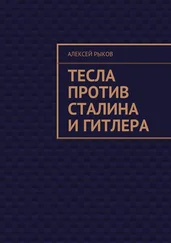85. I. Erhenburg and V. Grossman The Complete Black Book of Russian Jewry (New Brunswick, NJ, 2002), pp. 423–4.
86. Johnson, Nazi Terror, pp. 322–8.
87. Lorant, Hitler’s Prisoner, p. 123.
88. Stalin, Works, vol. xiii, p. 111.
89. R. W. Thurston Tear and Belief in the USSR’s “Great Terror”: Response to Arrest 1935–1939’, Slavic Review, 45 (1986), p. 228.
90. H. Arendt Eichmann in Jerusalem: a Report on the Banality of Evil (London, 1963), p. 22; C. Browning Ordinary Men: Reserve Police Battalion 101 and the Final Solution in Poland (London, 1992).
91. K.-M. Mailmann and G. Paul ‘Omniscient, Omnipotent, Omnipresent? Gestapo, Society and Resistance’, in D. Crew (ed.) Nazism and German Society 1933–1945 (London, 1994), pp. 173–4; R. Gellately The Gestapo and German Society: Enforcing Racial Policy 1933–1945 (Oxford, 1990), pp. 44–6; G. Browder Foundations of the Nazi Police State: the Formation of Sipo and SD (Lexington, Kty, 1990), p. 235, who gives a figure of 7,000 for the Gestapo detective force in 1936.
92. On police routine see Wilhelm, Die Polizei im NS-Staat. In 1938 Interior Minister Wilhelm Frick asked the police to compile a card index (Volkskartei) on every inhabitant aged 5 to 70, a task completed by 1940 (pp. 109–10).
93. Mailmann and Paul ‘Gestapo, Society and Resistance’, pp. 175–7. During the war the Gestapo spent most of its time pursuing non-German political ‘enemies’. See for example R. Otto Wehmacht, Gestapo und sowjetische Kriegsgefangenen im deutschen Reichsgebiet 1941/42 (Munich, 1998).
94. R. Conquest Justice and the Legal System in the USSR (London, 1968), p. 6.
95. Thurston, Life and Terror, pp. 70–71.
96. See C. Graf ‘Kontinuitäten und Brüche. Von der Politischen Polizei der Weimarer Republik zur Geheimen Staatspolizei’, in G. Paul and K.-M. Mallmann (eds) Die Gestapo – Mythos und Realität (Darmstadt, 1995), pp. 73–83; J. Tuchel ‘Gestapa und Reichssicherheitshauptamt, Die Berliner Zentralinstitutionen der Gestapo’, in Paul and Mallmann, Gestapo, pp. 84–100.
97. Merson, Communist Resistance, pp. 50–51; on factory monitoring see K.-H. Roth Facetten des Terrors: Der Geheimdienst der ‘Deutsche Arbeitsfront’ und die Zerstörung der Arbeiterbewegung 1933–1938 (Bremen, 2000), pp. 13–21.
98. S. Fitzpatrick ‘Signals from Below: Soviet Letters of Denunciation of the 1930s’, Journal of Modern History, 68 (1996), p. 834; Thurston, Life and Terror, p. 71.
99. Fitzpatrick, ‘Signals from Below’, p. 835.
100. V. Kozlov ‘Denunciation and its Functions in Soviet Governance: a Study of Denunciations and their Bureaucratic Handling from Soviet Police Archives 1944–1953’, Journal of Modern History, 68 (1996), p. 876.
101. Gellately, Gestapo and German Society, p. 162; see too Johnson, Nazi Terror, p. 365, who shows that in Krefeld civilian denunciations began 24 per cent of cases, while 32 per cent were initiated by the police.
102. Malimann and Paul, ‘Gestapo, Society and Resistance’, p. 179.
103. R. Gellately ‘Denunciations in Twentieth-Century Germany: Aspects of Self-Policing in the Third Reich and the German Democratic Republic’, Journal of Modern History, 68 (1996), p. 939.
104. Fitzpatrick, ‘Signals from Below’, p. 861.
105. J. Connelly The Uses of Volksgemeinschaft: Letters to the NSDAP Kresileitung Eisenach, 1939–1940’, Journal of Modern History, 68 (1996), p. 926. On motivation see C. Arbogast Herrschaftsinstanzen der württembergischen NSDAP: Funktion, Sozialprofi l und Lebenswege einer regionalen NS-Elite 1920–1960 (Munich, 1998), pp. 102–11.
106. Fitzpatrick, ‘Signals from Below’, p. 848.
107. For example, Benvenuti, ‘Industry and Purge’, pp. 61–3, 68–9.
108. R. Evans ‘Social Outsiders in German History: From the Sixteenth Century to 1933’, in Gellately and Stoltzfus, Social Outsiders, pp. 20–44; see too G. Alexopoulos Stalin’s Outcasts: Aliens, Citizens and the Soviet State, 1926–1936 (Ithaca, NY, 2003), pp. 3–11.
109. S. Fitzpatrick ‘How the Mice Buried the Cat: scenes from the Great Purges of 1937 in the Russian Provinces’, Russian Review, 52 (1993), p. 319. no. Baynes, Hitler’s Speeches, vol. i., p. 230.
111. R. Gellately Backing Hitler: Consent and Coercion in Nazi Germany (Oxford, 2001), pp. 51–69. See too B. Engelmann In Hitler’s Germany: Everyday Life in the Third Reich (London, 1988), pp. 34–5. Engelmann, discussing the camps with acquaintances after the war, records the following: ‘My parents spoke of the camps as having an important educational function. Of course in my house there was more talk of “dangerous enemies of the state”, and I also heard that they were dealt with severely.’
112. M. Ellman The Soviet 1937 Provincial Show Trials: Carnival or Terror?’, Europe – Asia Studies, 53 (2001), pp. 1221, 1223–33.
113. I. Zbarsky and S. Hutchinson Lenin’s Embalmers (London, 1998), pp. 108–9.
114. Connelly, ‘Uses of Volksgemeinschaff, p. 917.
115. I. Gutkin The Magic of Words: Symbolism, Futurism, Socialist Realism’, in B. G. Rosenthal (ed.) The Occult in Russian and Soviet Culture (Ithaca, NY, 1997), pp. 241–4.
116. E. Lyons Assignment Utopia (London, 1937), p. 372.
117. R. Rhodes Masters of Death: the SS Einsatzgruppen and the Invention of the Holocaust (New York, 2002), p. 219.
118. Kaden and Nestler, Dokumente des Verbrechens, vol. i., pp. 245, 247, Rede Heinrich Himmlers in Posen, 4 October 1943.
119. Resis, Molotov Remembers, pp. 265, 270.
1. J. Thies ‘Nazi Architecture – a Blueprint for World Domination: the Last Aims of Adolf Hitler’, in D. Welch (ed.) Nazi Propaganda (London, 1983), pp. 46–7.
2. T. J. Colton Moscow: Governing the Socialist Metropolis (Cambridge, Mass., 1995), p. 280.
3. Colton, Socialist Metropolis, p. 218.
4. K. Berton Moscow: an Architectural History (London, 1977), pp. 222–4.
5. Colton, Socialist Metropolis, p. 332; Berton, Moscow, p. 224.
6. R. Eaton Ideal Cities: Utopianism and the (Un) Built Environment (London, 2001), pp. 183–96 on Soviet utopianism; Colton, Socialist Metropolis, p. 333.
7. A. Speer Inside the Third Reich: Memoirs (London, 1970), pp. 74, 132–3.
8. D. Münk Die Organisation des Raumes im Nationalsozialismus (Bonn, 1993), p. 304; A. Scobie Hitler’s State Architecture: the Impact of Classical Antiquity (London, 1990), pp. 110–12; H. Weihsmann Bauen unterm Hakenkreuz: Architektur des Untergangs (Vienna, 1998), pp. 19–20.
9. Weihsmann, Bauen unterm Hakenkreuz, p. 272; Scobie, Hitler’s State Architecture, p. 112.
10. W. C. Brumfi eld A History of Russian Architecture (Cambridge, 1993), p. 486; Colton, Socialist Metropolis, p. 332.
11. E. Forndran Die Stadt-und Industriegründungen Wolfsburg und Salzgitter (Frankfurt am Main, 1984), pp. 67–8.
12. L. E. Blomquist ‘Some Utopian Elements in Stalinist Art’, Russian Review, 11 (1984), pp. 298–301; Colton, Socialist Metropolis, p. 223. See too A. J. Klinghoffer Red Apocalypse: the Religious Evolution of Soviet Communism (Lanham, Md, 1996), pp. 48 ff.
13. Scobie, Hitler’s State Architecture, p. 97.
14. Forndran, Die Stadt-und Industriegründungen, pp. 67–8.
15. Colton, Socialist Metropolis, p. 200.
16. S. F. Starr ‘Visionary Town Planning during the Cultural Revolution’, in S. Fitzpatrick (ed.) Cultural Revolution in Russia, 1928–1931 (Bloomington, Ind., 1978), p. 218.
17. R. Stites Revolutionary Dreams: Utopian Vision and Experimental Life in the Russian Revolution (Oxford, 1989), p. 202.
18. M. Droste Bauhaus, 1919–1933 (Cologne, 1998), pp. 227–8, 233–5.
19. H. Giesler Ein anderer Hitler: Bericht seines Architekten Hermann Giesler (Leoni, 1977), pp. 199, 206; G. Troost (ed.) Das Bauen im neuen Reich (Bayreuth, 1939), p. 131.
Читать дальше
Конец ознакомительного отрывка
Купить книгу
